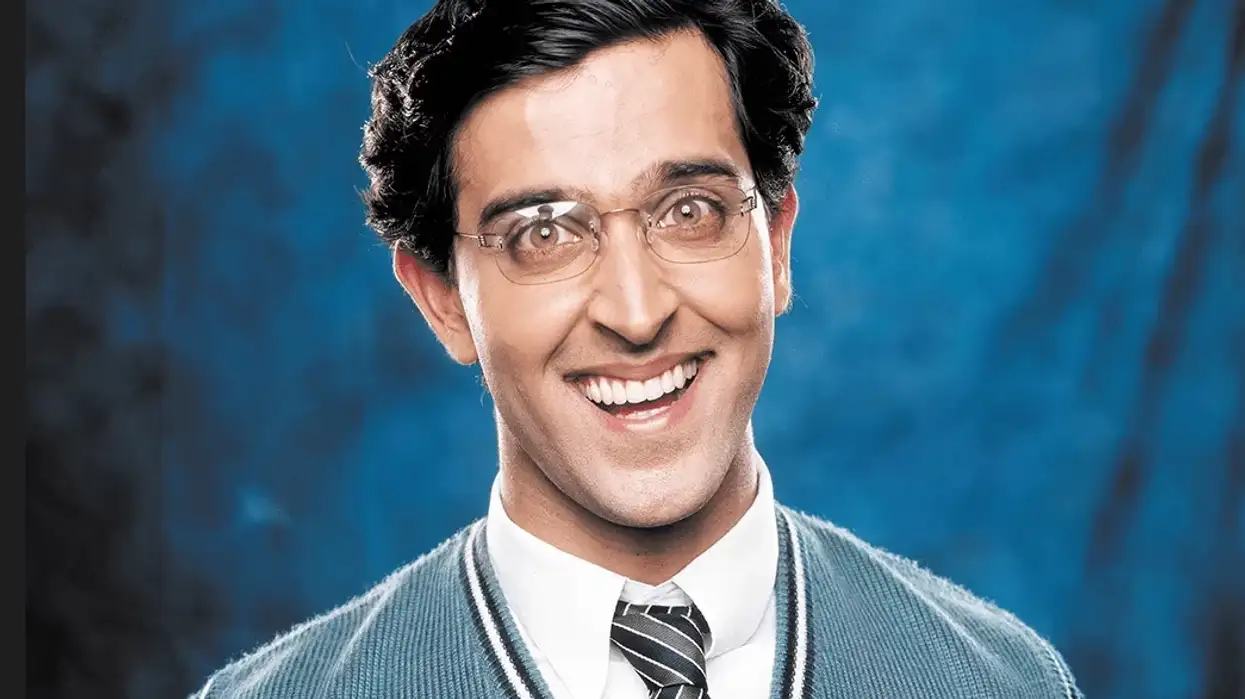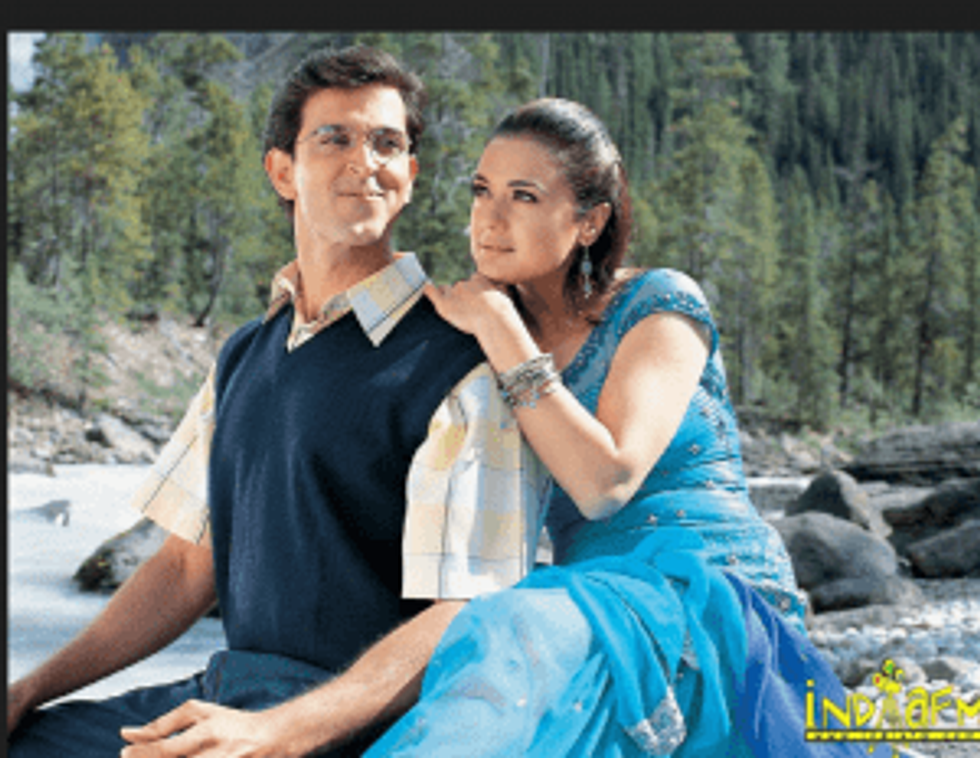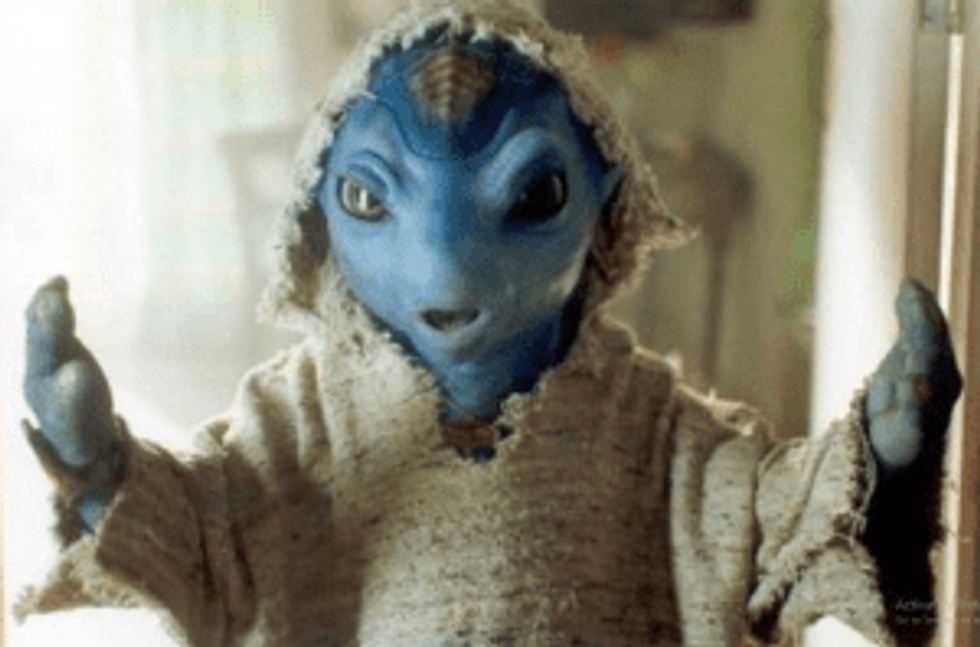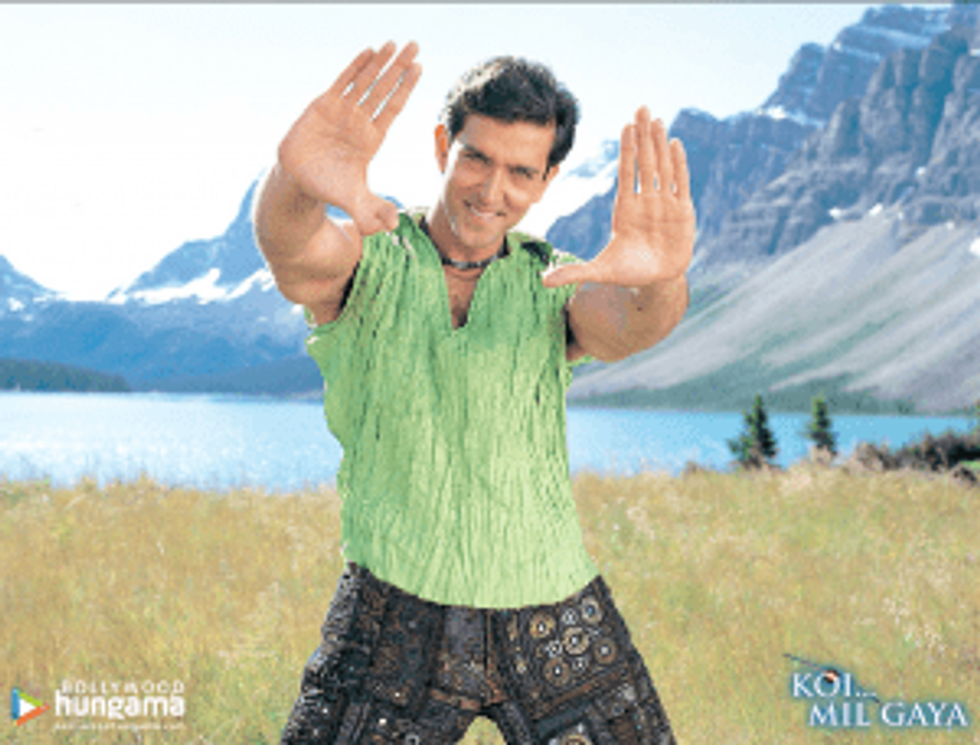ONCE in a generation movie Koi Mil Gaya took everyone by surprise when it was released on August 8, 2003.
From the unique subject matter to the leading man’s remarkable transformation, special effects and introducing an extra-terrestrial into Bollywood, the sci-fi spectacular became a landmark movie and won multiple awards.
It had a stand-out performance from Hrithik Roshan, which won multiple awards. The Rakesh Roshan directed musical about an alien befriending a mentally challenged young man, also spawned two superhero inspired sequels and a cartoon spin-off.
Eastern Eye decided to mark 20 years of a great film by presenting 20 fun facts connected to it.
- Rakesh Roshan was motivated to make an out of the box film after attending the premiere of Lagaan (2001). The idea of an extra-terrestrial movie came to him after seeing his five-year-old granddaughter watching a series about it on a cartoon network later that same year.
- Anil Kapoor and Jackie Shroff both rejected the father’s role. Rishi Kapoor was approached to take on the character, but he declined and suggested that Rakesh Roshan should play it himself, which he did.
- Aishwarya Rai Bachchan was the first choice to play the leading lady. Her unavailability led the director to cast Preity Zinta. Rakesh Roshan had been impressed by her supporting role in Dil Se and felt she would be perfect for the role. Zinta described it as one of her career’s toughest and most fulfilling roles.
- Like all his previous directorial efforts, Rakesh Roshan started the film title with the letter ‘K’. But before settling on Koi Mil Gaya, he had considered calling the sci-fi adventure Koi Aap Jaisa, Koi Tumsa Nahin and Kaisa Jaadu Kiya.
- A number of different spectacles were tried for the mentally challenged character played by Hrithik Roshan. They eventually used the same pair his super suave character Raj wore in Kaho Naa Pyaar Hai.
- The actor lost a lot of weight to play the adult with the mind of an 11-year-old, but it wasn’t enough. To create the illusion of further weight loss, he wore baggy clothes and had a hairstyle that made his face look thinner.
- Legend has it that Hrithik took inspiration for his Rohit look, when he is mentally challenged, from legendary spoof singer Weird Al Yankovic.
- Jadoo was played by late actor Indravadan Purohit dressed in the costume, with animatronic headgear. He couldn’t see anything and had to rely on instructions to move around. Purohit also found it hard to breathe in the costume.
- Principle photography for the path-breaking movie commenced on November 12, 2001 and finally concluded in March 2003. The ambitious project went over budget, largely due to the special effects and designing the alien.
- What most audiences did not notice was the alien Jadoo being given an extra thumb, just like Hrithik’s character has in the film. Hrithik revealed it was there for the two characters to feel familiarity but kept subtle because it didn’t turn out how they wanted after the alien was designed.
- Two endings were originally shot for the film, with one seeing Rohit lose all his powers after the alien leaves the Earth. After hearing the opinions of leading filmmaker friends, Rakesh Roshan opted for a happier ending where Rohit retains his powers. This would subsequently set up a hit superhero sequel.
- A key plot point of Koi Mil Gaya sees the lead protagonist’s father dying in a car crash and his mother getting injured. The same thing happened to Preity Zinta when she was 13 years old, with her father dying and mother surviving a car crash.
- Hrithik won both the Best Actor Critic’s and Best Actor at the Filmfare Awards for Koi Mil Gaya.
- It was widely believed that Koi Mil Gaya was the first Bollywood film to deal with aliens, but that wasn’t the case. Forgotten 1967 sci-fi drama Wahan Ke Log had an alien theme. (Incidentally, the lead protagonist of that sixties classic was named Rakesh, which is the same as the Koi Mil Gaya director).
- Preity Zinta’s love interest in the film was named Rohit (Hrithik). Later in 2003, she had a love interest named Rohit in Kal Ho Naa Ho played by Saif Ali Khan. Koi Mil Gaya and Kal Ho Naa Ho were the two highest grossing films of that year. (Incidentally, Hrithik had played a character named Rohit in his debut movie Kaho Naa Pyaar Hai)
- A German dubbed version of the movie was released with the title of Sternenkind(Star Child) in Germany, Austria, and Switzerland duringChristmas of 2005.
- Indonesian soap opera Si Yoyo was based on Koi Mil Gaya and ran from 2003–2007. Telugu film Orey Pandu(2005) was also inspired by the sci-fi classic. In 2004, Nickelodeon India produced a spin-off TV series based on alien character Jadoo titled J Bole Toh Jadoo.
- Rakesh Roshan was inspired to make a sequel to Koi Mil Gaya after watching the The Lord Of The Rings trilogy.
- A book titled The Making Of Koi Mil Gaya: You are Not Alone, Behind the Scenes by James Colmer was published in 2003.
- Multiple high-profile people told Rakesh Roshan his son Hrithik playing someone mentally challenged in Koi Mil Gaya would end his career. How wrong they were. The movie became a big hit, spawned two sequels and another one is on the way. It remains a classic and is still celebrated today.









 The Christmas light walks in central London that still feel festive Getty Images
The Christmas light walks in central London that still feel festive Getty Images 





